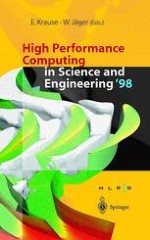The book contains reports about the most significant projects from science and industry that are using the supercomputers of the Federal High Performance Computing Center Stuttgart (HLRS). These projects are from different scientific disciplines, with a focus on engineering, physics and chemistry. They were carefully selected in a peer-review process and are showcases for an innovative combination of state-of-the-art physical modeling, novel algorithms and the use of leading-edge parallel computer technology. As HLRS is in close cooperation with industrial companies, special emphasis has been put on the industrial relevance of results and methods.
